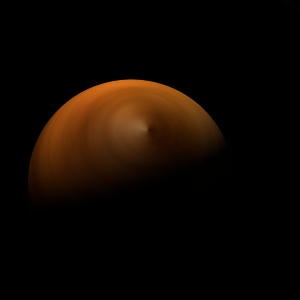|
|
Space Astro
|
Info for exoplanet "Girbos Medeia"
| Scientific (actual) data |
|---|
| Name | MLLA 8 b |
| Planet status | Confirmed |
| Planet mass | 18 |
| Semi major axis | 268.1 |
| Angular distance | 0.64 |
| Discovered | 2020 |
| Updated | 2025-09-01 |
| Publication | Published in a refereed paper |
| Detection type | Imaging |
| Mass measurement type | Spectrum |
| Alternate names | 2MASS J05350518-0526036 b, COUP 235 b |
| Star name | MLLA 8 |
| Right ascension | 83.77° |
| Declination | -5.43° |
| Mag v | 19.23 |
| Mag i | 15.3 |
| Mag j | 13.6 |
| Mag h | 12.88 |
| Mag k | 12.5 |
| Star distance | 419 |
| Star mass | 0.13 |
| Star radius | 1.1 |
| Star sp type | M4.5 |
| Star age | 0.0019 |
| Star temperature | 3063 |
| Star alternate names | 2MASS J05350518-0526036, COUP 235 |
| Wikipedia article | MLLA 8 b |
Back
| |
| Fictional info (?) |
|---|
| Suggested name | Girbos Medeia |
| Planet type | Huge cold gas giant |
| Its orbital period around MLLA 8 of @ORBITALPERIOD earth days is the shortest of all the planets in its solar system.
It is a huge cold gas giant planet with a mass one-thousandth that of MLLA 8, but two-and-a-half times that of all the other planets in its solar system combined.
It has the densest atmosphere of the two huge cold gas giants, consisting primarily of hydrogen peroxide.
Its north and south poles, therefore, lie where most other planets have their equators. Wind speeds can reach 122 metres per second. |
| Atmosphere | Hydrogen peroxide | 56% |
| Formaldehyde | 43% |
| Ammonia | 0.54% |
| Hydrogen deuteride (HD) | 0.02% |
| Water vapor | 0.012% |
| Atmospheric pressure | 0.0011 bar |
 |
| Moon | Nusme | Medium-sized round gaseous asteroid |
| Matheapus | Small potato shaped rocky moon |
| Dilmipone | Very small round rocky comet |
| Google search for Girbos medeia |
|
Website by Joachim Michaelis
|
|
|
|